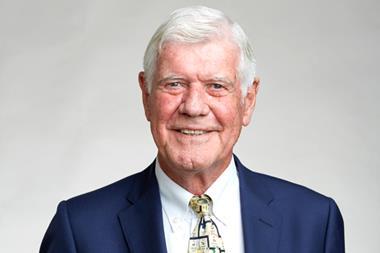Periodic table harmonies and woolly models
Elements of harmony
The recent Last Retort on unions between science and music included a cartoon of a periodic table vibraphone (periodiphone?) being played. This led me to wonder how such an instrument might be tuned.
There are obviously resonances between octaves in music and the periodic table with the major (or minor) difference that while musical octaves start and end on the same named note, periodic octaves do not start and end on the same group – so perhaps Ne and Na would have to be the same pitch. Compounds would provide chords with CO being a major third and NaCl a jazzy seventh.
Tuning becomes more interesting when we reach the transition elements where the octave would need to be divided into eighteen – neatly half-way between the traditional twelve semitones and the more avant-garde 24 quarter-tones.
I am sure, for the person with the right skill set, it would be fairly straightforward to program this to be played on a horizontal touch screen. Is anyone out there willing to accept the challenge?
Hugh Meteyard MRSC
Epping, UK
First class grads
The recent letter from Michael Harris implying the lack of effectiveness of UK chemistry graduates requires a response.
UK universities have always produced an excellent crop of chemistry graduates. Provided a company has a professional engagement and recruitment strategy, is fully effective at mentoring and training, and has existing staff who are prepared to transfer their knowledge and skills to new employees, then in my extensive experience in industry, graduates can make a rapid and effective contribution. Indeed, provided they are given the freedom to express themselves, they can challenge outdated and stale thinking that so easily entrenches itself in working environments and practices.
I have even seen undergraduate industrial placement students make a real difference to the companies that have had the courage to employ them.
There is a lot of young talent out there which deserves to be encouraged and supported.
Mike Green FRSC
Newcastle, UK
Woolly thinking
How nice it was to see Alexander Crum Brown’s ‘knitted’ model of rocksalt in Philip Ball’s recent article. I remember another notable model maker, Arnold Beevers, showing it to me when I was an undergraduate.
Beevers’ curation of the chemistry museum at Edinburgh included a note from James Kendall, who succeeded James Walker, Crum Brown’s successor, attesting to the date of the model as 1883. The note also relates a comment regarding the model made by William Bragg at a Royal Institution Christmas lecture in 1938: ‘Of course other people had speculated on the lattice structure of sodium chloride long before 1913, but speculation was never equivalent to proof.’
Interestingly, at the end of 1883, William Barlow published two papers in Nature proposing the same model for ‘sodic choride’ inter alia. Barlow was a man of independent means (who incidentally derived the 230 space groups independently of Evgraf Fedorov and Arthur Schönflies), so it has not (yet?) been possible to find out if he and Crum Brown wrote to each other. There is no evidence of this in Crum Brown’s papers but there might be something in those of Barlow, a man to whom coincidence was no stranger.
Lindsay Sawyer CChem MRSC
University of Edinburgh, UK
Cotton, Wilkinson & Christie
I was interested to read of Agatha Christie’s wide knowledge of poisons. It reminded me of a footnote in an early edition of Cotton and Wilkinson’s Inorganic chemistry text where the reference to the toxicity of thallium compounds was a Christie novel. I wonder if the authors knew of her expertise or whether it was just a fun reference. Sadly we shall now never know.
Alan Vincent CChem FRSC
New Malden, UK
Chemical weapons
I was interested to read ‘The chemists’ war’, by Michael Freemantle, having just finished Russian roulette: how British spies defeated Lenin, by Giles Milton.
I hadn’t realised that chemical weapons continued to be used in Europe after the armistice. Milton describes a British weapon, the ‘M device’, that consisted of diphenylaminechloroarsine, which was converted into a dense toxic smoke that incapacitated and sometimes killed those who breathed it. Winston Churchill, had 50,000 of these devices transported to Russia for use against the Bolsheviks, but they proved largely ineffective in the damp Russian autumn of 1919. Churchill was also intent on their use on the northwest frontier of India, but didn’t get his way.
At the end of the intervention in Russia, less than 3000 had been used and the rest were dumped in the White Sea, where they remain to this day.
Peter Skelly MRSC
Bedford, UK
Constant complaints
My sensibilities were offended when I read the article ‘Refining Avogadro’s number on way to new kilo’. The Avogadro quantity is not a number, but a constant with units of mol–1; and ‘kilo’ is an SI prefix signifying 1000 or 103. By itself, the prefix is meaniningless.
Nigel S Clarke CChem MRSC
Vienna, Austria












No comments yet